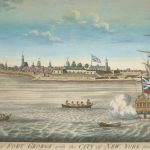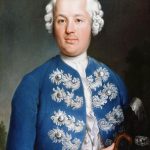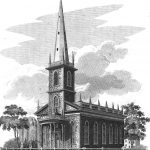Fort George

Our first stop is Fort George, which no longer exists, but on its site can now be found the Alexander Hamilton U.S. Custom House, which now houses the Museum of the American Indian. Fort George, originally Fort Amsterdam, was built by the Dutch in 1626. Once under English control, the fort was called Fort James, ...
Fraunces Tavern

The next stop on the tour is Fraunces Tavern, which was originally built as a mansion in 1719 by Stephen DeLancey. Located at Broad and Queen Streets, it was used for residential purposes, then as offices for a mercantile firm from 1740 through 1759. Samuel Fraunces bought it in 1762 and opened what was originally ...
South Street Seaport

Our next stop on the tour is South Street Seaport. New York was an incredibly important port city in North America and in the British Empire as a whole. Much business was done here both in intercontinental and international trade. In 1769 alone, New York “shipped thirty-four separate commodities to Britain, thirty-five to the West ...
Trinity Church

The last stop on this tour of Revolutionary New York is Trinity Church. The current building is not the same one that stood during the Revolutionary period, as it burned down in a fire in 1776. Trinity was an Episcopal church whose steeple was an important feature of the city’s skyline, standing at 175 feet. ...